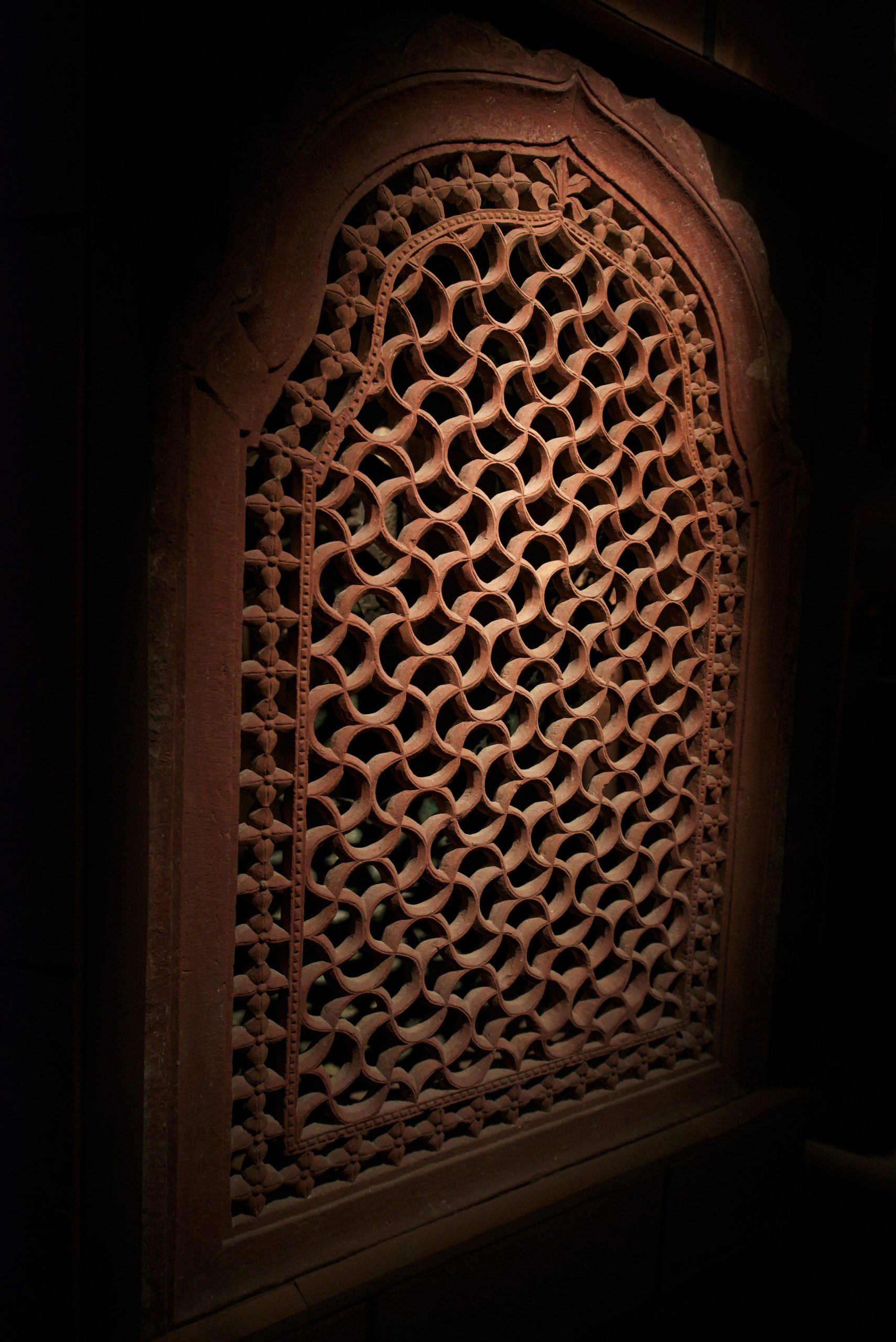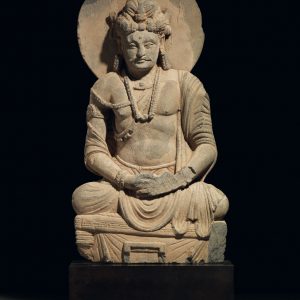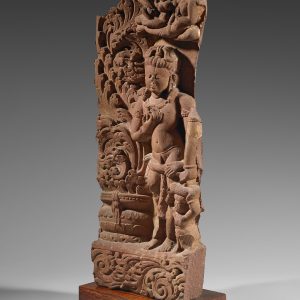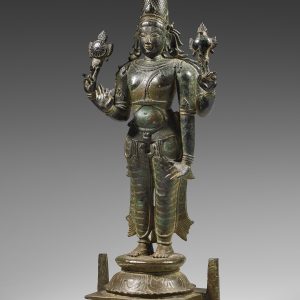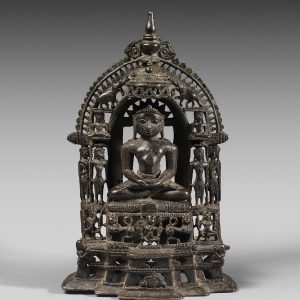Moghol Jālī
25 000,00€
Red sandstone
Northern India, Agra region
First half of the 17th century
H. 145 cm; W. 86 cm
Description
This arch-shaped Jālī features a delicate two-way openwork ogival latticework, surrounded by a beaded net, bordered by finely incised rosettes. A cavet and scalloped edge frame the central panel.
Jālī were particularly popular during the Mughal period. Generally placed in front of an opening or between two rooms, they helped to keep the interior of a building cool, as the slender openings in the panel allowed air to circulate. The light passing through created graceful shadows on the walls and floors, which shifted and changed throughout the day.
This ogival motif can be found on some of the panels of the balustrade inside the Diwan-i-Khas in Fatehpur Sikri, built around 1572 by the emperor Akbar (1550-1605). Akbar already favoured the use of red sandstone.
The central cartouche has been restored.
Catalogue reference: An Indian Odyssey, p.8
Provenance: Gallery, Francesca Galloway, London, 3 December 2004

